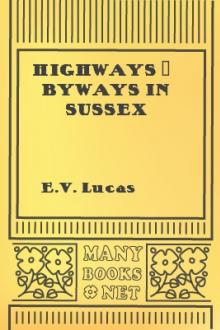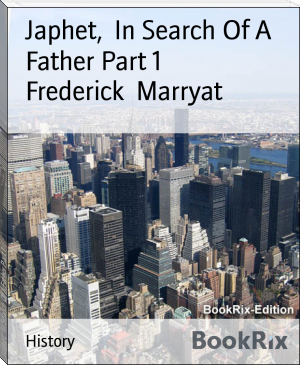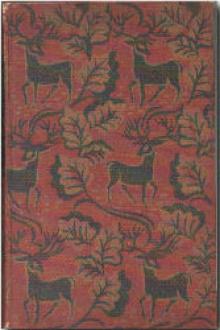Highways & Byways in Sussex by E. V. Lucas (e reader pdf best .txt) 📕

- Author: E. V. Lucas
- Performer: -
Book online «Highways & Byways in Sussex by E. V. Lucas (e reader pdf best .txt) 📕». Author E. V. Lucas
Although Brighton has still a fishing industry, the spectacle of its fishermen refraining from work is not an uncommon one. It was once the custom, I read, and perhaps still is, for these men, when casting their nets for mackerel or herring, to stand with bare heads repeating in unison these words: "There they goes then. God Almighty send us a blessing it is to be hoped." As each barrel (which is attached to every two nets out of the fleet, or 120 nets) was cast overboard they would cry:—
When the last net was overboard the master said, "Seas all!" and then lowered the foremast and laid to the wind. If he were to say, "Last net," he would expect never to see his nets again.
"There are more handsome women in Brighton than anywhere else in the world," wrote Richard Jefferies some twenty years ago. "They are so common that gradually the standard of taste in the mind rises, and good-looking women who would be admired in other places pass by without notice. Where all the flowers are roses you do not see a rose." (Shirley Brooks must have visited Brighton on a curiously bad day, for seeing no pretty face he wrote of it as "The City of the Plain.") Richard Jefferies, who lived for a while at Hove, blessed also the treelessness of Brighton. Therein he saw much of its healing virtue. "Let nothing," he wrote, "cloud the descent of those glorious beams of sunlight which fall at Brighton. Watch the pebbles on the beach; the foam runs up and wets them, almost before it can slip back, the sunshine has dried them again. So they are alternately wetted and dried. Bitter sea and glowing light, bright clear air, dry as dry—that describes the place. Spain is the country of sunlight, burning sunlight; Brighton is a Spanish town in England, a Seville."
The principal inland attraction of Brighton is still the Pavilion, which is indeed the town's symbol. On passing through its very numerous and fantastic rooms one is struck by their incredible smallness. Sidney Smith's jest (if it were his; I find Wilberforce, the Abolitionist, saying something similar) is still unimproved: "One would think that St. Paul's Cathedral had come to Brighton and pupped." Cobbett in his rough and homely way also said something to the point about the Prince's pleasure-house: "Take a square box, the sides of which are three feet and a half, and the height a foot and a half. Take a large Norfolk turnip, cut off the green of the leaves, leave the stalks nine inches long, tie these round with a string three inches from the top, and put the turnip on the middle of the top of the box. Then take four turnips of half the size, treat them in the same way, and put them on the corners of the box. Then take a considerable number of bulbs of the crown-imperial, the narcissus, the hyacinth, the tulip, the crocus, and others; let the leaves of each have sprouted to about an inch, more or less according to the size of the bulb; put all these, pretty promiscuously, but pretty thickly, on the top of the box. Then stand off and look at your architecture."
To its ordinary museum in the town Brighton has added the collection of stuffed birds made by the late Mr. E. T. Booth, which he housed in a long gallery in the road that leads to the Dyke. Mr. Booth, when he shot a bird in its native haunts, carried away some of its surroundings in order that the taxidermist might reproduce as far as possible its natural environment. Hence every case has a value that is missing when one sees merely the isolated stuffed bird. In one instance realism has dictated the addition of a clutch of pipit's eggs found on the Bass Rock, in a nest invisible to the spectator. The collection in the Natural History Museum at South Kensington is of course more considerable, and finer, but some of Mr. Booth's cases are certainly superior, and his collection has the special interest of having been made by one man.
Brighton has another very interesting possession in the collection of old domestic pottery in the museum: an assemblage (the most entertaining and varied that I know) of jugs and mugs, plates and ornaments, all English, all quaint and characteristic too, and mostly inscribed with mottoes or decorated with designs in celebration of such events as the battle of Waterloo, or the discomfiture of Mr. Pitt, or a victory of Tom Cribb. Others are ceramic satires on the drunkard's folly or the inconstancy of women. Why are the potters of our own day so dull? History is still being made, human nature is not less frail; but I see no genial commentary on jug or dish. Is it the march of Taste?
CHAPTER XVIII ROTTINGDEAN AND WHEATEARSOvingdean—Charles II.—The introduction of Mangel Wurzel—Rottingdean as a shrine—Mr. Kipling's Sussex poem—Thomas Fuller on the Wheatear—Mr. Hudson's description of the traps—The old prosperous days for shepherds—Luring larks—A fight on the beach—The town that failed.
Beyond Kemp Town's serene and silent line of massive houses is the new road that leads to Rottingdean. The old road fell into the sea some few years ago—the fourth or fifth to share that fate. But the pleasantest way thither is on foot over the turf that tops the white cliffs.
By diverging inland between Brighton and Rottingdean, just beyond the most imposing girls' school in the kingdom, Ovingdean is reached, one of the nestling homesteads of the Downs. It is chiefly known as providing Harrison Ainsworth with the very pretty title of one of his stories, Ovingdean Grange. The gallant novelist, however, was a poor historian in this book, for Charles the Second, as we have seen, never set foot east of Brighton on the occasion of his journey of escape over the Sussex Downs. The legend that lodges him at Ovingdean, although one can understand how Ovingdean must cherish it, cannot stand. (Mock Beggars' Hall, in the same romance, is Southover Grange at Lewes.)
Peace hath her victories no less renowned than war. Ovingdean is famous not only for its false association with Charles the Second but as the burial place of Thomas Pelling, an old-time Vicar, "the first person who introduced Mangul Wurzel into England."
Rottingdean to-day must be very much of the size of Brighton two centuries ago, before fashion came upon it; but the little village is hardly likely ever to creep over its surrounding hills in the same way. The past few years, however, have seen its growth from an obscure and inaccessible settlement to a shrine. It is only of quite recent date that a glimpse of Rottingdean has become almost as necessary to the Brighton visitor as the journey to the Dyke. Had the Legend of the Briar Rose never been painted; had Mulvaney, Ortheris and Learoyd remained unchronicled and the British soldier escaped the label "Absent-minded Beggar," Rottingdean might still be invaded only occasionally; for it was when, following Sir Edward Burne-Jones, Mr. Rudyard Kipling found the little white village good to make a home in, that its public life began. Although Mr. Kipling has now gone farther into the depths of the county, and the great draughtsman, some of whose stained glass designs are in the church, is no more, the habit of riding to Rottingdean is likely, however, to persist in Brighton. The village is quaint and simple (particularly so after the last 'bus is stabled), but it is valuable rather as the key to some of the finest solitudes of the Downs, in the great uninhabited hill district between the Race Course at Brighton and Newhaven, between Lewes and the sea, than for any merits of its own. One other claim has it, however, on the notice of the pilgrim: William Black lies in the churchyard.
Mr. Kipling, as I have said, has now removed his household gods farther inland, to Burwash, but his heart and mind must be still among the Downs. The Burwash country, good as it is, can (I think) never inspire him to such verse as he wrote in The Five Nations on the turf hills about his old home:—
Of old the best wheatear country was above Rottingdean; but the South Down shepherds no longer have the wheatear money that used to add so appreciably to their wages in the summer months. A combination of circumstances has brought about this loss. One is the decrease in wheatears, another the protection of the bird by law, and a third the refusal of the farmers to allow their men any longer to neglect the flocks by setting and tending snares. But in the seventeenth, eighteenth and early part of the nineteenth centuries, wheatears were taken on the Downs in enormous quantities and formed a part of every south county banquet in their season. People visited Brighton solely to eat them, as they now go to Greenwich for whitebait and to Colchester for oysters.
This is how Fuller describes the little creature in the Worthies—"Wheatears is a bird peculiar to this County, hardly found out of it. It is so called, because fattest when Wheat is ripe, whereon it feeds; being no bigger than a Lark, which it equalleth in fineness of the flesh, far exceedeth in the fatness thereof. The worst is, that being onely seasonable in the heat of summer, and naturally larded with lumps of fat, it is soon subject to corrupt, so that (though abounding within fourty miles) London Poulterers have no mind to meddle with them, which no care in carriage can keep from Putrefaction. That Palate-man shall pass in silence, who, being seriously demanded his judgment concerning the abilities of a great Lord, concluded him a man of very weak parts, 'because once he saw him, at a great Feast, feed on CHICKENS when there were WHEATEARS on the





Comments (0)